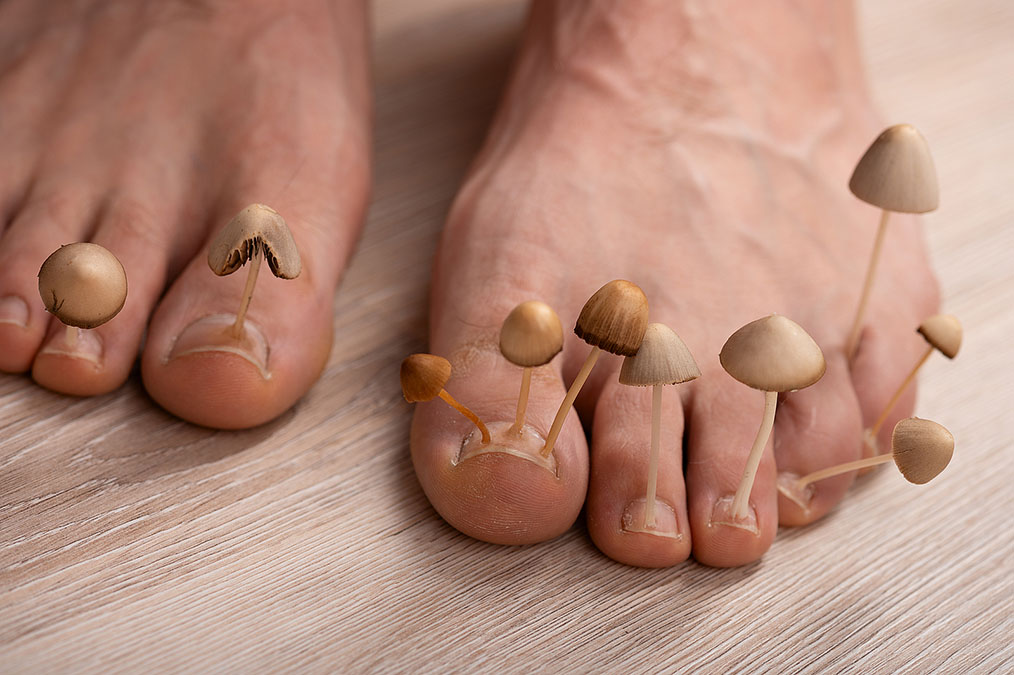 Around 5.5% of people worldwide struggle with nail fungus, and as treatments are slow to work, it is important to find out whether there is anything we can do to prevent it.
Around 5.5% of people worldwide struggle with nail fungus, and as treatments are slow to work, it is important to find out whether there is anything we can do to prevent it.
A new study in the Journal of Fungi has compiled a list of scientifically proven risk factors, some of which are quite strange.
Avoid these risk factors and prevent or even reverse nail fungus without complications.
The study involved patients aged 18 or older in the All of Us database from May 6, 2018, to January 1, 2022. Nail fungus cases were identified using the International Classification of Diseases (ICD) and Systematized Nomenclature of Medicine (SNOMED) diagnostic codes.
The authors collected the participants’ age, sex, ethnicity, and co-occurring conditions via medical records and questionnaires.
In total, 15,760 nail fungus patients and 47,280 healthy controls were included. The average age of the patients was 64.9 years, with women comprising 54.2%.
The racial composition was diverse to ensure the most accurate scientific conclusions, with 52.8% of participants non-Hispanic white, 23.0% black, 17.8% Hispanic, and 6.3% other.
Compared to the control group, the likelihood of having nail fungus was higher for certain groups:
-
1. Obesity increased risk 2.59 times and 46% of obese participants had nail fungus.
2. 21% of people with foot ringworm had nail fungus, with an almost 11 times greater risk.
3. 14.4% of those with peripheral vascular disease had nail fungus, with a threefold larger risk.
4. Venous insufficiency increased their risk 3.38 times, with 13.4% of sufferers struggling with fungal infections.
5. 5.6% of people with varicose veins had nail fungus, with their risk increased 2.71 times.
6. Diabetes increased participants’ risk 3.28 times, with 5.6% of them affected by the condition.
This study reaffirms the importance of identifying and managing these risk factors, not only to prevent initial nail fungal infections but also to identify high-risk groups that should be particularly well-screened and protected.

 Overcoming IBD
Overcoming IBD Multiple Sclerosis
Multiple Sclerosis Banishing Bronchitis
Banishing Bronchitis Gum Disease Gone
Gum Disease Gone Overcoming Onychomycosis
Overcoming Onychomycosis Neuropathy No More
Neuropathy No More The Prostate Protocol
The Prostate Protocol Brain Booster
Brain Booster
 Ironbound
Ironbound
 Solution for Shingles
Solution for Shingles
 The Bone Density Solution
The Bone Density Solution
 The Ultimate Healing Protocol
The Ultimate Healing Protocol
 The Parkinson's Protocol
The Parkinson's Protocol
 The Chronic Kidney Disease Solution
The Chronic Kidney Disease Solution
 Overthrowing Anxiety
Overthrowing Anxiety The Fatty Liver Solution
The Fatty Liver Solution The Hypothyroidism Solution
The Hypothyroidism Solution
 The End of Gout
The End of Gout The Blood Pressure Program
The Blood Pressure Program
 The Oxigized Cholesterol Strategy
The Oxigized Cholesterol Strategy
 Stop Snoring And Sleep Apnea Program
Stop Snoring And Sleep Apnea Program
 The Arthritis Strategy
The Arthritis Strategy The Vertigo & Dizziness Program
The Vertigo & Dizziness Program The 3-Step Diabetes Strategy
The 3-Step Diabetes Strategy Hemorrhoids Healing Protocol
Hemorrhoids Healing Protocol The Erectile Dysfunction Master
The Erectile Dysfunction Master Weight Loss Breeze
Weight Loss Breeze The IBS Program
The IBS Program The Insomnia Program
The Insomnia Program The Migraine and Headache Program
The Migraine and Headache Program The Neck Pain Solution
The Neck Pain Solution The Menopause Solution
The Menopause Solution The Ejaculation Master
The Ejaculation Master The TMJ Solution
The TMJ Solution The Acid Reflux Solution
The Acid Reflux Solution The Fibromyalgia Solution
The Fibromyalgia Solution The Psoriasis Strategy
The Psoriasis Strategy